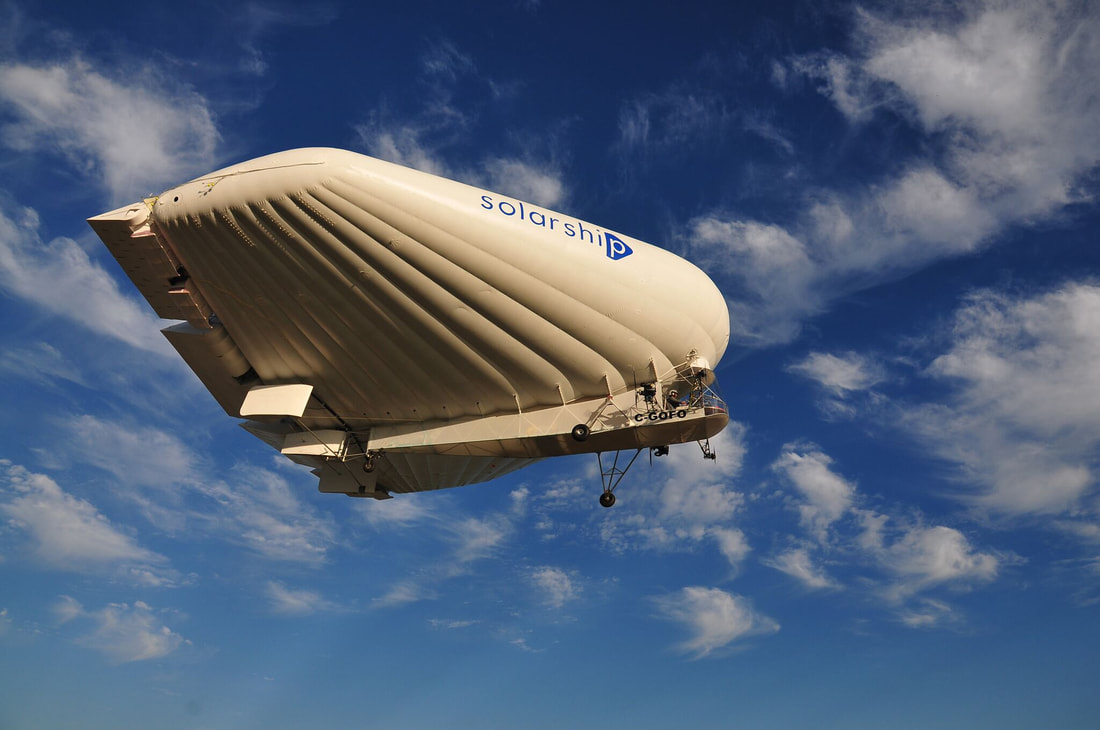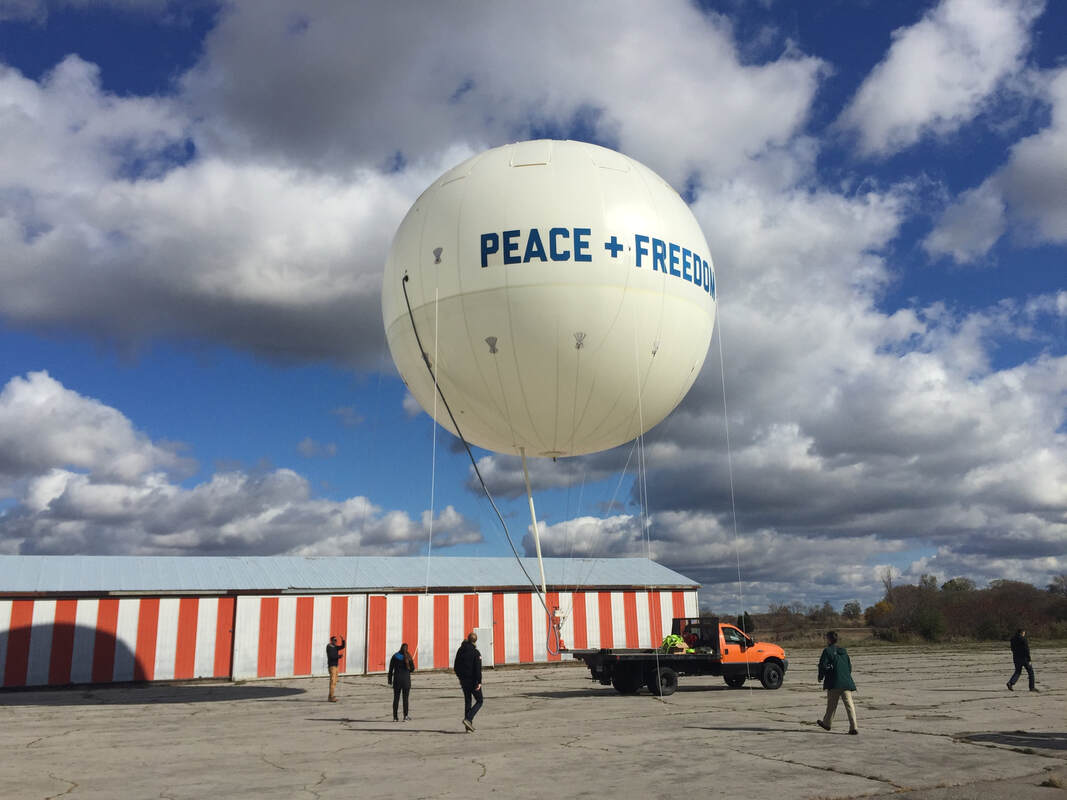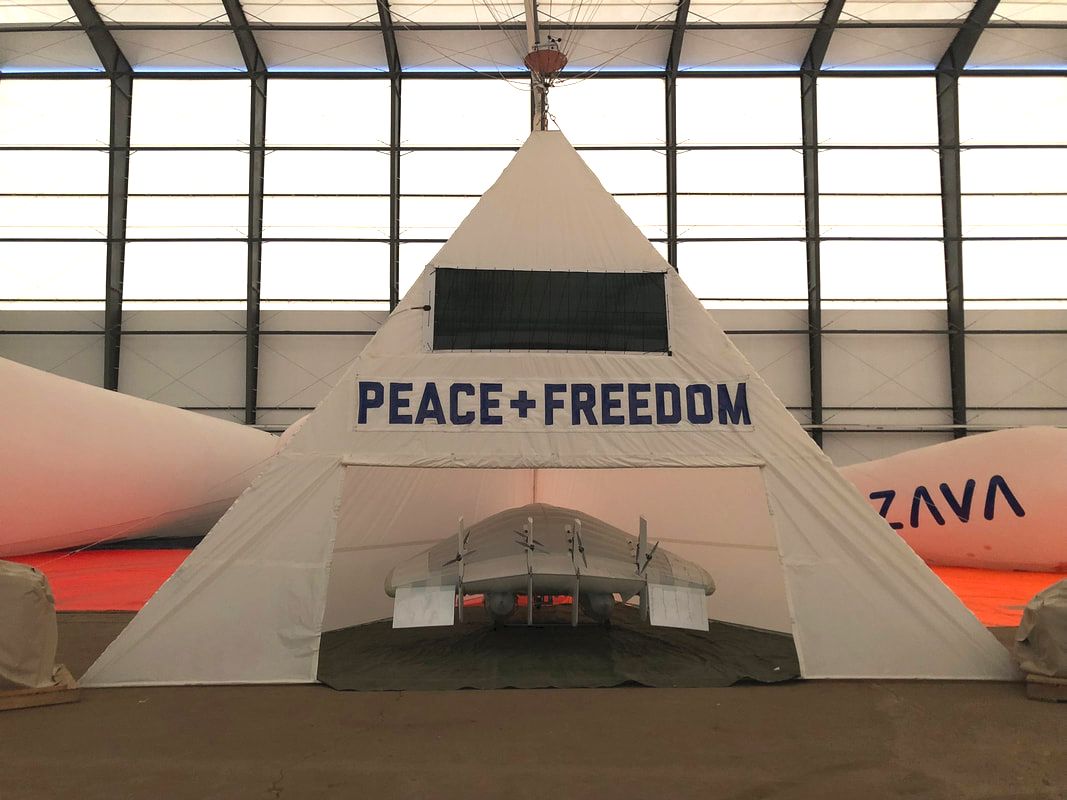STORY
BEGINNINGS
In 1983, Jay Godsall was a high school student hoping to expand his lawn-mowing business in Ottawa. His friend Michel Rugema, son of a Burundian diplomat, introduced him to the African embassy community for a simple lunch meeting to talk business. It turned into a debate over the challenges of transportation posed by landlocked Africa and Canada, and Jay realized that solving the problem would require a new kind of vehicle - a vehicle that did not rely on extensive infrastructure, or on fossil fuels.
The venture was a departure from mowing lawns, but after several challenging starts and almost 25 years, Jay founded Solar Ship Inc. in 2006 to build buoyant aircraft that fly anywhere without the need for fuel, roads or infrastructure. Since then, Solar Ship has developed and tested more than a dozen aircraft and recruited world leaders in aviation, energy, logistics, advanced materials, finance, and remote operations
The venture was a departure from mowing lawns, but after several challenging starts and almost 25 years, Jay founded Solar Ship Inc. in 2006 to build buoyant aircraft that fly anywhere without the need for fuel, roads or infrastructure. Since then, Solar Ship has developed and tested more than a dozen aircraft and recruited world leaders in aviation, energy, logistics, advanced materials, finance, and remote operations
HYBRID AIRSHIPS
Hybrid airships are a new kind of aircraft that combines aerodynamic lift (like an airplane) and buoyant lift (like a balloon) to improve the performance, efficiency, and ground handling characteristics of airships, creating an aircraft that can do things neither airplanes nor airships can.
Guided by its unwavering mission, Solar Ship has been pushing the boundaries of aviation since its founding. Combining novel aircraft design with pioneering electric propulsion and control systems is a challenge that comes with risk as well as reward, and some of the many lessons that have been learned over the years have been hard ones. After several years of testing and flying remotely-piloted and manned prototypes of its delta-wing hybrid airship successfully, Solar Ship set out to build the world’s first solar-electric powered hybrid airship, the Caracal. While it set records for electric short takeoff and landing (STOL) performance as part of its Test & Evaluation program, the Caracal crashed, injuring its pilots.
The crash led to soul-searching and a thorough re-analysis of every aspect of the design to understand the novel aerodynamic and aerostructural root causes. This effort became the foundation for the Wolverine aircraft program, and years of computational fluid dynamics, prototyping, and test & evaluation culminated in a clean-sheet design improving on every aspect of Solar Ship’s hybrid aircraft. Solving the stability challenges and improving efficiency at the same time, this design is the basis for all of Solar Ship’s current hybrids.
Guided by its unwavering mission, Solar Ship has been pushing the boundaries of aviation since its founding. Combining novel aircraft design with pioneering electric propulsion and control systems is a challenge that comes with risk as well as reward, and some of the many lessons that have been learned over the years have been hard ones. After several years of testing and flying remotely-piloted and manned prototypes of its delta-wing hybrid airship successfully, Solar Ship set out to build the world’s first solar-electric powered hybrid airship, the Caracal. While it set records for electric short takeoff and landing (STOL) performance as part of its Test & Evaluation program, the Caracal crashed, injuring its pilots.
The crash led to soul-searching and a thorough re-analysis of every aspect of the design to understand the novel aerodynamic and aerostructural root causes. This effort became the foundation for the Wolverine aircraft program, and years of computational fluid dynamics, prototyping, and test & evaluation culminated in a clean-sheet design improving on every aspect of Solar Ship’s hybrid aircraft. Solving the stability challenges and improving efficiency at the same time, this design is the basis for all of Solar Ship’s current hybrids.
AEROSTATS
Out of necessity, the Wolverine program had pushed Solar Ship to develop world-leading core competencies in aerodynamics, fabric engineering and manufacturing, electric propulsion and energy systems. When presented with the opportunity to build a tethered aerostat, Solar Ship used these capabilities to reimagine the conventional cigar-shaped design aerostat and develop a solar-powered spherical design called the Powerstat that could be produced with low enough cost and high enough endurance to finally make it feasible for use in remote areas. Whether for anti-poaching surveillance, as a floating cell-phone tower, or the basis for a transarctic communications network, Solar Ship continues to explore the potential unlocked by the Powerstat platform.
ROUND AIRSHIPS
What if an aerostat could fly itself to the site of operation? This ambitious challenge led to the development of Solar Ship’s spherical airship, the Tsorocopter, combining the envelope of the Powerstat with enough electric motors to independently control its flight in every direction. The prototype was so successful that it led to an entirely new product line of airships offering precise maneuverability and heavy lift capabilities for a variety of missions and applications.
TEEPEE INFRASTRUCTURE
The Teepee is another offshoot of the development of the Powerstat. Remote area infrastructure able to house large aircraft is a persistent challenge, if not an impossibility if it involves heavy metal or concrete construction. The Teepee is a unique building like an enormous tent that gains its primary structural integrity from the buoyant lift of a spherical aerostat pulling tension on its fabric instead of requiring rigid poles. This innovation dramatically reduces the size, weight, and deployment time required to erect large structures in remote areas.
WHERE WE ARE GOING NEXT
- Passenger services for researchers and innovators, and a Solar Ship safari allowing people to experience iconic nature
- Conservation and anti-poaching work with local organizations
- Aerostat networks to provide communications and connect points of need with points of care
- Cargo transportation services delivering critical cargo to otherwise inaccessible places



